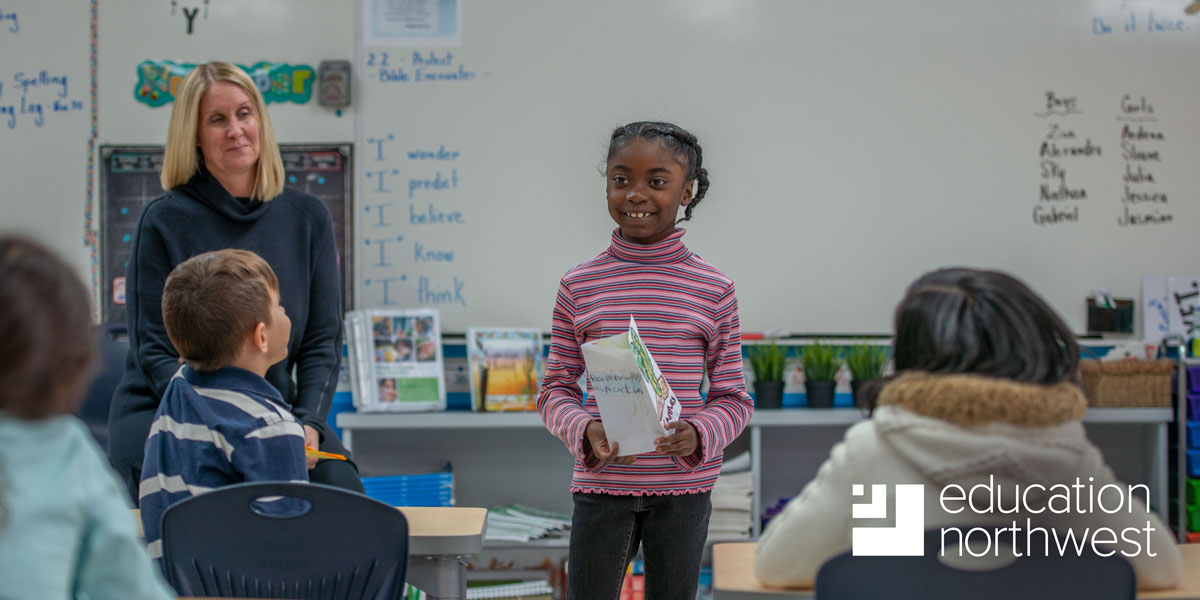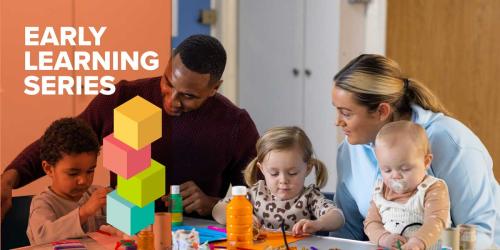It’s On Adults to Make Space for Youth Voice

The research is abundantly clear: Young people benefit enormously when they have a voice in their environment. Youth voice encourages student engagement, fosters feelings of self-worth, and builds leadership skills that prime young people for civic life.
With overwhelming supporting evidence, it’s past time that adults take action to promote youth voice. Here are some ways to get started.
Confront Adultism
Adultism is bias and discrimination against young people, based solely on age. It fosters an often-unconscious assumption that young people are inferior to adults. Like many forms of bias, adultism is woven into the fabric of our society. It shows up in our words (think of phrases like “Children should be seen and not heard”) and our actions—often without us even realizing it.
An important first step to changing this dynamic is being mindful of how we might perpetuate adultism and, in turn, diminish the value and contributions of the young people with whom we work. Becoming aware of our attitudes and actions allows us to change the mindsets reflected in our behavior and choose to create environments that nurture the participation and agency of the young people around us.
Create Authentic, Meaningful Opportunities for Youth Voice
Authentic youth voice emerges from environments where young people feel safe, heard, and respected. Adults can intentionally build these spaces, starting by listening to the young people in the room.
Ask yourself: Do young people have meaningful choice of activities and opportunities in your school, classroom, or program? Do you ask for their input on activities—and are you responsive to their feedback? If you’re not sure, ask the young people how they feel.
Keep in mind that authentic, meaningful student voice is not hosting a one-time panel, asking a single young person to speak on behalf of all their peers, or making young people feel pressured to say whatever the adults in the room want to hear.
Provide Guidance and Scaffolding
Young people need opportunities to practice meaningful decision-making. But throwing the doors of opportunity wide open can be overwhelming for anyone, especially if your students have had few opportunities to exercise voice and choice. Instead of abandoning them to endless possibilities, adults can act as their guide on the side.
Scaffolding is one way to guide young people to develop their decision-making skills over time. By gradually increasing young people’s responsibilities, roles, and challenges, you give them a chance to try something new and feel successful or learn from their mistakes.
Start by providing a level of opportunity and support that’s appropriate for their ability. For example, you might offer kindergartners a choice in that day’s activity. With high school seniors, you might help them choose, plan, and execute a semester-long applied project. Remember, it’s never too early to make young people an active partner in their own learning.
Encourage Self-reflection
Self-reflection is a powerful tool for learning. Including self-reflection activities in our time with youth promotes self-regulated learning and the development of metacognition and executive functions. When youth can practice these skills with our support, they are more likely to continue planning and reflecting as a habit, even without adult support. With repeated opportunities to engage in self-reflection, young people develop critical thinking skills that support planning, predicting, and decision-making.
Adults can provide support by modeling self-reflection; asking young people lots of great, open-ended questions; and encouraging them to self-reflect before and after they exercise voice and choice.
Keep Students at the Center
Young people already have a voice—and they have a lot to say. They don’t need adults to “give” them a voice: They need us to provide opportunities for input, relevant choice, and shared leadership. When adults offer meaningful support; provide increasing challenges, roles, and responsibilities; and know when to step up or step back and get out of the way, young people can develop the skills that they need to become independent, engaged, and empowered citizens.
When you combine these elements together, you begin to build a wonderful environment where young people can flourish — because they have what they need to thrive.



